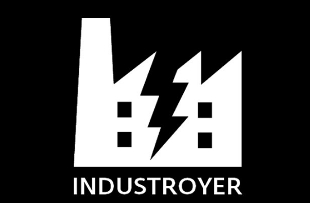Its name is "Industroyer", and it is capable of bringing the energy infrastructure of an entire country to its knees. It is a very powerful piece of malware, the test of which was carried out last December in Kiev, when a part of the Ukrainian capital plunged into darkness a moment after a fifth of its electricity grid had failed. Now, two cyber security companies explained, that malware has been developed to such an extent that it can do more damage than Stuxnet, the cyber weapon used in 2009 by Israel and the United States to physically sabotage the nuclear program. Iranian before an agreement was reached between Tehran and the international community. It was the Slovak company Eset that raised the alarm: "Industroyer"uses the communication protocols developed decades ago in the energy and water distribution sector, and by taking advantage of their internal flaws, it manages to seize them, giving hackers the opportunity to maneuver them and close the distribution of energy resources. It is "the most serious threat to industrial control systems since Stuxnet", writes Eset on Twitter, pointing to a link to an article that explains in detail what and how the virus unfolds and the consequences that could make the last one appear. hacker attack in mid-May against dozens of countries, including Italy, child's play. If you haven't heard: our research team discovered the biggest threat to industrial control systems since #Stuxnet: https://t.co/4mT89yV4JW pic.twitter.com / 6BtnOAh3OU - ESET (@ESET) June 12, 2017 "The potential impact is enormous," Eset researcher Rbert Lipovsky tells Wired. "If this is not an alarm bell - he added referring to what happened on December 17, 2016 in Kiev - I don't know what else could be". "Industroyer" - which the experts of the cyber security company Dragos call "Crash Override" and would have been developed by Sandworm hackers, linked to the Russian government - can "dialogue" directly with energy systems without human interaction, even offline . It can be, explains Rob Lee of Dragos to Wired, like a time bomb.If this is not an alarm bell - he added referring to what happened on December 17, 2016 in Kiev - I do not know what else could be. "" Industroyer "- which the experts of the cyber security company Dragos call" Crash Override "and it would have been developed by the Sandworm hackers, linked to the Russian government - it can "dialogue" directly with energy systems without human interaction, even offline.If this is not an alarm bell - he added referring to what happened on December 17, 2016 in Kiev - I do not know what else could be. "" Industroyer "- which the experts of the cyber security company Dragos call" Crash Override "and it would have been developed by the Sandworm hackers, linked to the Russian government - it can "dialogue" directly with energy systems without human interaction, even offline.linked to the Russian government - can "dialogue" directly with energy systems without human interaction, even offline. It can be, explains Rob Lee of Dragos to Wired, like a time bomb.linked to the Russian government - can "dialogue" directly with energy systems without human interaction, even offline. It can be, explains Rob Lee of Dragos to Wired, like a time bomb.
Share
June 12, 2017 Its name is "
Industroyer
", and it is capable of bringing the energy infrastructure of an entire country to its knees. It is a very powerful piece of malware, the test of which was carried out last December in Kiev, when a part of the Ukrainian capital plunged into darkness a moment after a fifth of its electricity grid had failed. Now, two cyber security companies explained, that malware has been developed to such an extent that it can do more damage than Stuxnet, the cyber weapon used in 2009 by Israel and the United States to physically sabotage the nuclear program. Iranian before an agreement was reached between Tehran and the international community.
It was the Slovak company Eset that raised an alarm: "Industroyer" uses the communication protocols developed decades ago in the energy and water distribution sector, and by taking advantage of their internal flaws, it manages to seize them, giving hackers the opportunity to manipulate them and close the distribution of energy resources. This is "the most serious threat to industrial control systems since Stuxnet", writes Eset on Twitter, pointing to a link to an article that explains in detail what and how the virus unfolds and the consequences that could make the last one appear. hacker attack in mid-May against dozens of countries, including Italy, child's play.
If you haven't heard: our research team discovered the biggest threat to industrial control systems since #Stuxnet: https://t.co/4mT89yV4JW pic.twitter.com/6BtnOAh3OU
- ESET (@ESET) June 12, 2017 "The potential impact is huge," Eset researcher Rbert Lipovsky tells Wired.
"If this is not an alarm bell - he added referring to what happened on December 17, 2016 in Kiev - I don't know what else could be".
"Industroyer" - which the experts of the cyber security company Dragos call "Crash Override" and would have been developed by Sandworm hackers, linked to the Russian government - can "dialogue" directly with energy systems without human interaction, even offline .
It can be, explains Rob Lee of Dragos to Wired, like a time bomb.

